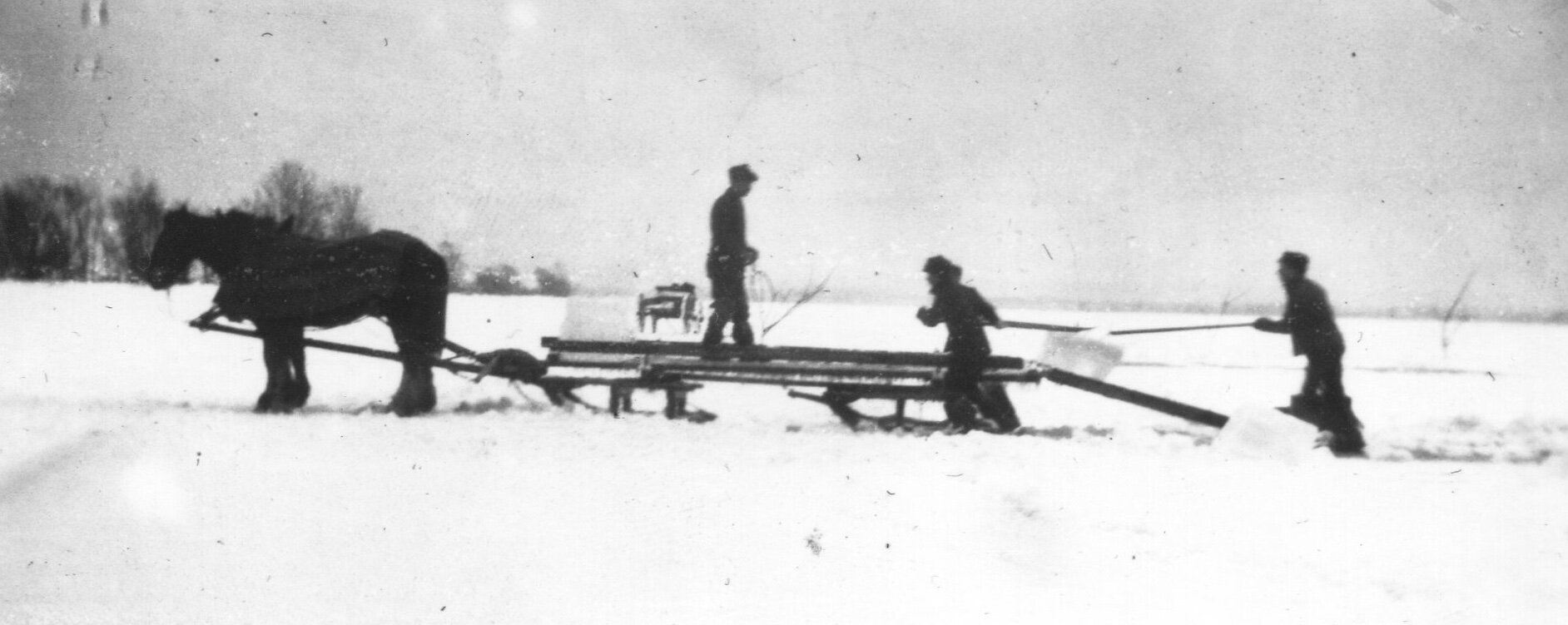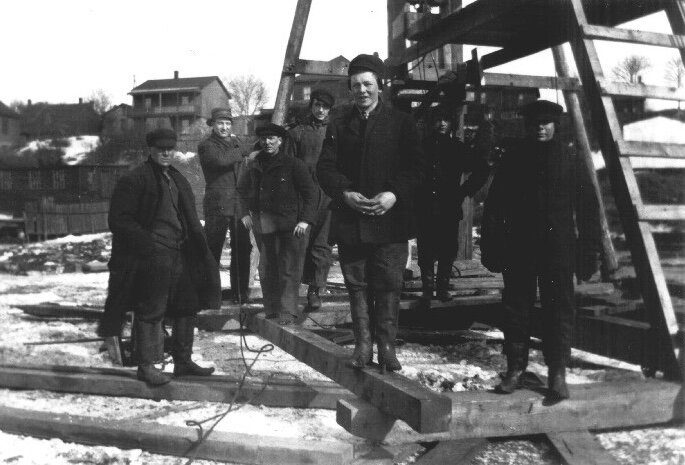Ice Harvesting
North End of Bay St.
More than a hundred years ago, there would have been a musty smell in the air at this bend in the road on a summer day. The smell would have come from the thousands of melting blocks of ice packed in straw in the ice houses lining the shore. The ice houses of Dewey & O’Hare, Albert J. Cummer and W.B. Foyster were packed close together between the north ends of Bay and Wood Streets. In the days before mechanical refrigeration, these stores of ice had to meet Hamiltonians’ cooling needs for the entire year.



The ice-harvesting season was short, running from mid-January through February. A sizeable workforce of 600 men was hired to harvest ice each winter. The income from this work was crucial for labourers, because their summer wages would be close to depleted by this time.
Working hours were long, often beginning at 4 a.m. and lasting until late afternoon or early evening. Dangerous conditions and low pay were typical. In the winter of 1914, the Hamilton Spectator reported that “Ice-cutting operations usually result in a couple of serious accidents every year, and sometimes a fatality.”
Hamilton’s ice-harvesting companies varied in size. Smaller companies such as Foyster’s used traditional ice-harvesting methods up until at least World War I. The workers hauled the cut ice by horse and sleigh. Larger companies used a more advanced, factory-like process. At Cummer’s, men known as “fielders” were the first to arrive for work in the morning. They cleared the snow off huge areas of ice to be cut. A horse with a plough-like “marker” then made passes across the ice field. These ploughs “marked” the ice in 22-by-30-inch blocks and cut it to a depth of 10 inches. Next, a group of men with large saws completed the cutting. They loosened the ice into floats of about 100 blocks. Another group of men pushed these long rows of ice down a narrow channel towards the ice house on shore. They were then spread out over a mile or more, using long pike-poles to propel the ice. About 200 yards from the ice house, another group of men used long iron bars to pry the ice apart into individual blocks. These blocks were pushed into an elevator on the outside of the ice house. This piece of machinery fed ice into the building at a rate of 60 to 70 blocks per minute. Once inside, a system of conveyors whisked the ice blocks into different compartments.
Pollution and artificial ice-making put an end to this industry. The last reported ice harvest on the Bay was in 1926. The demise of the industry cut off a crucial source of winter income for many of Hamilton’s seasonal workers and their families.
